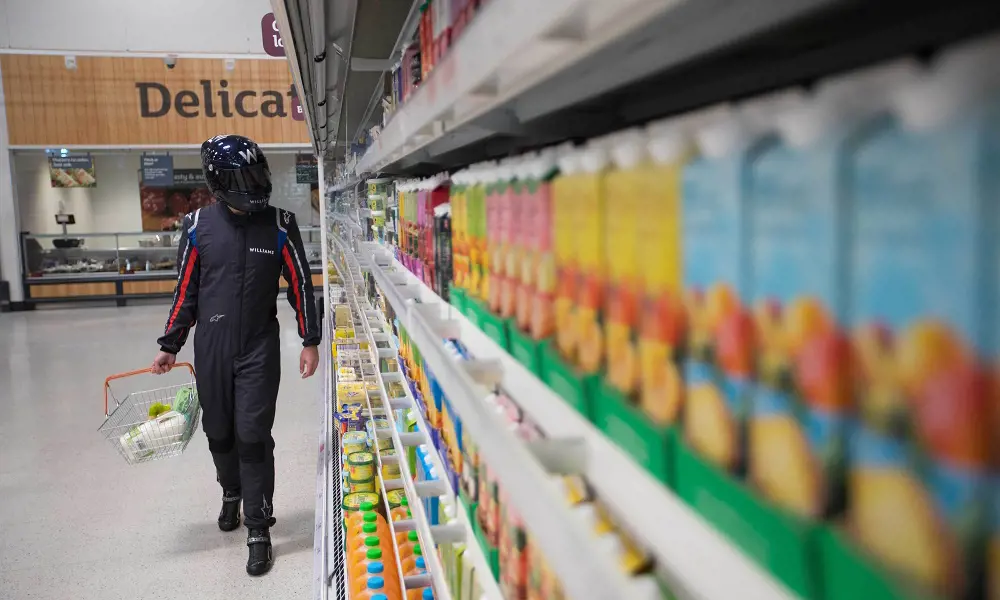
Warm response to fluid dynamics
Energy saved
🏪 The impact of aerofoil on energy savings
- Sainsbury’s alone accounts for 1% of the UK’s total energy demand.
- Refrigeration can account for more than half of the energy costs of running supermarkets and convenience stores.
- Applying the principles of an aerofoil, extending forward from each shelf in a refrigeration unit, contains and re-energises the downward flow of cool air in open refrigerators.
- Each fridge fitted with an aerofoil uses 15% to 25% less energy than those without.
Engineers know that they are on to something when their innovations provoke the response: “Why didn’t someone think of that before?”. That was certainly the response from some people when in 2013 Paul McAndrew, CEO of Aerofoil Energy, started looking for backing and engineering input for his idea for saving energy in supermarkets. There was clearly enough new engineering in the concept to get Aerofoil Energy’s technology on to the shortlist of three finalists for this year’s MacRobert Award.
McAndrew’s simple aerofoil concept can make a significant difference in supermarket refrigeration, an important area of business, as well as benefiting the environment through energy savings. Shoppers also experience welcome relief from the ‘frozen aisle’ effect, the Arctic feeling that comes over anyone who navigates the chilled-food section in a supermarket.
Building on his career in refrigeration, McAndrew had his eye on the energy bills that supermarkets rack up keeping produce at the right temperature in the cabinets that store frozen and chilled food. Supermarkets and convenience stores account for an estimated 10% of the UK’s total energy use, with fridges using around 40% of that, and a lot of that energy is wasted when cold air flows out of the cabinets.
Most supermarkets use open-fronted refrigerator cabinets for better merchandising and to give customers easy access. Current designs launch a cushion of cooled air at the top of the cabinet, intending to recapture it at the bottom. In practice, a lot of cold air escapes and warm air seeps in, increasing the temperature of the return air. Cold air also flows out into the surrounding aisles, to the discomfort of shoppers. Some supermarkets then put extra heaters in those aisles, compounding the problem.
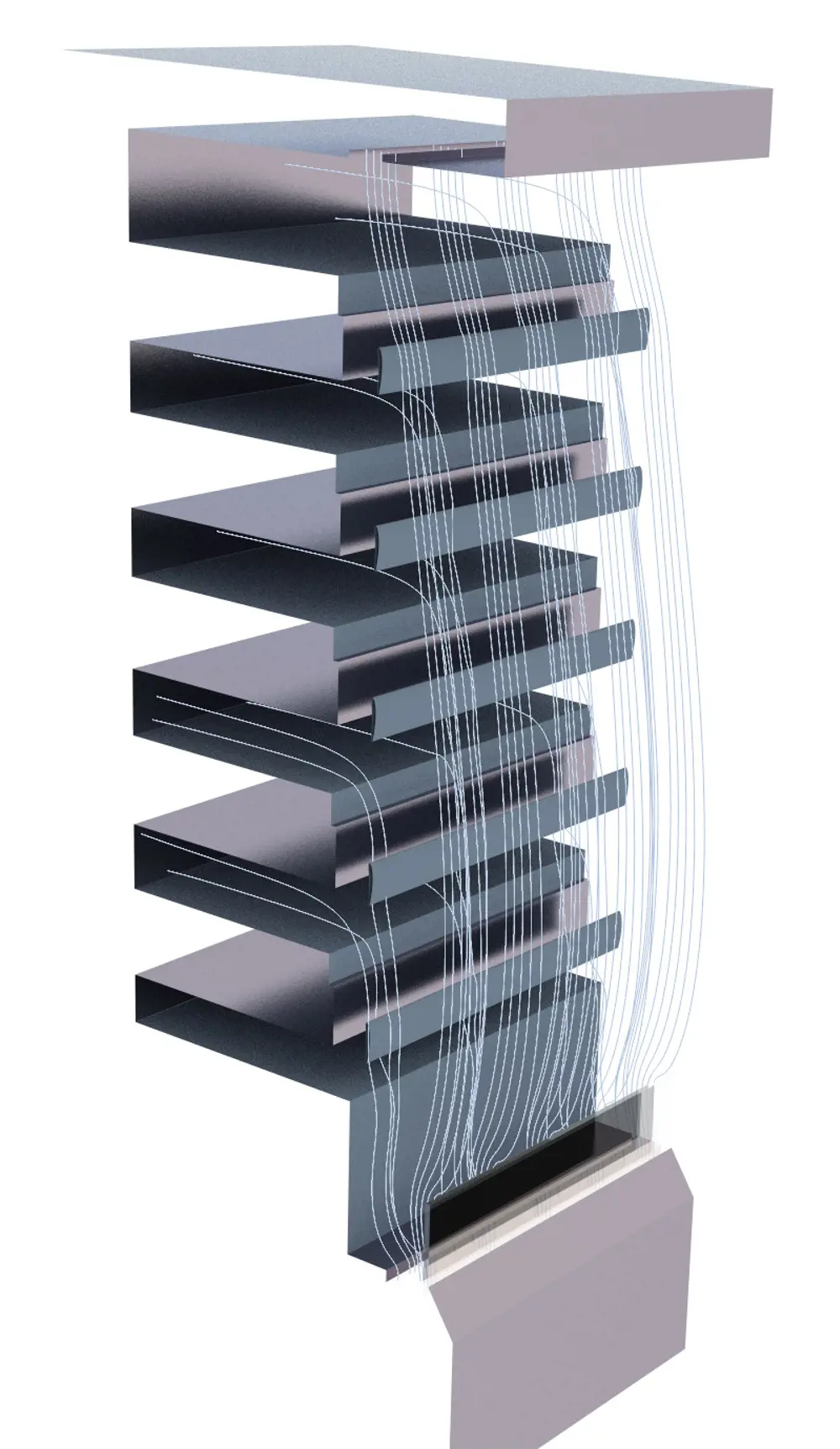
Acting as the price label holder, the aerofoil maintains a cohesive and conforming cold-air curtain, ensuring that the cold air cascades down the fridge and preventing its escape into the aisle © Williams Advanced Engineering
Built on experience
McAndrew spent around 20 years in sales of refrigeration cabinets and says that “should we or shouldn’t we use doors?” was a constant question he heard from customers. His answer was always: “I really don’t know”. Although they can save energy, closed-door fridges are more expensive to make, harder to recycle and have high maintenance costs, as well as being difficult to open for elderly or frail people, or those with a basket in one hand.
With so many people seeking his advice, it made sense for McAndrew to investigate the issue; he came up with the idea of using aerofoils to control the air curtain in a fridge and to maintain its stability. It helped that he is, as he confesses, “also a bit of a geek”, and had a lightbulb moment when watching a video of smoke going over an aerofoil in a wind tunnel. An aerofoil is a structure with curved surfaces designed to give the most favourable ratio of lift to drag in flight, and is generally used as the basic form of the wings, fins and tailplanes in most aircraft. A similar design is present in the front and rear wings of a Formula One (F1) car. The idea that an aerofoil could bend a moving stream of air was exactly what he felt was needed for an air curtain on a fridge to stop the air from drifting over into the aisles in the supermarket.
The idea that an aerofoil could bend a moving stream of air was exactly what he felt was needed for an air curtain on a fridge to stop the air from drifting over into the aisles in the supermarket
McAndrew could not get the idea out of his head. He commissioned a fabricator to make some aerofoils and created some hand-made fittings. He then borrowed a fridge and carried out experiments at an independent centre that ran tests for fridge-makers under industry standard conditions. When McAndrew rang to find out how it had gone, the test centre broke the news that it was rerunning the tests. Fearing the worst, he asked if that meant the tests had failed. Far from it, the results looked good, almost too good to be true. “They got quite excited,” he reports.
To save McAndrew money, the test lab initially modelled the aerofoils with computational fluid dynamics (CFD), which again showed such promise that they were quickly tested on a fridge with impressive results.
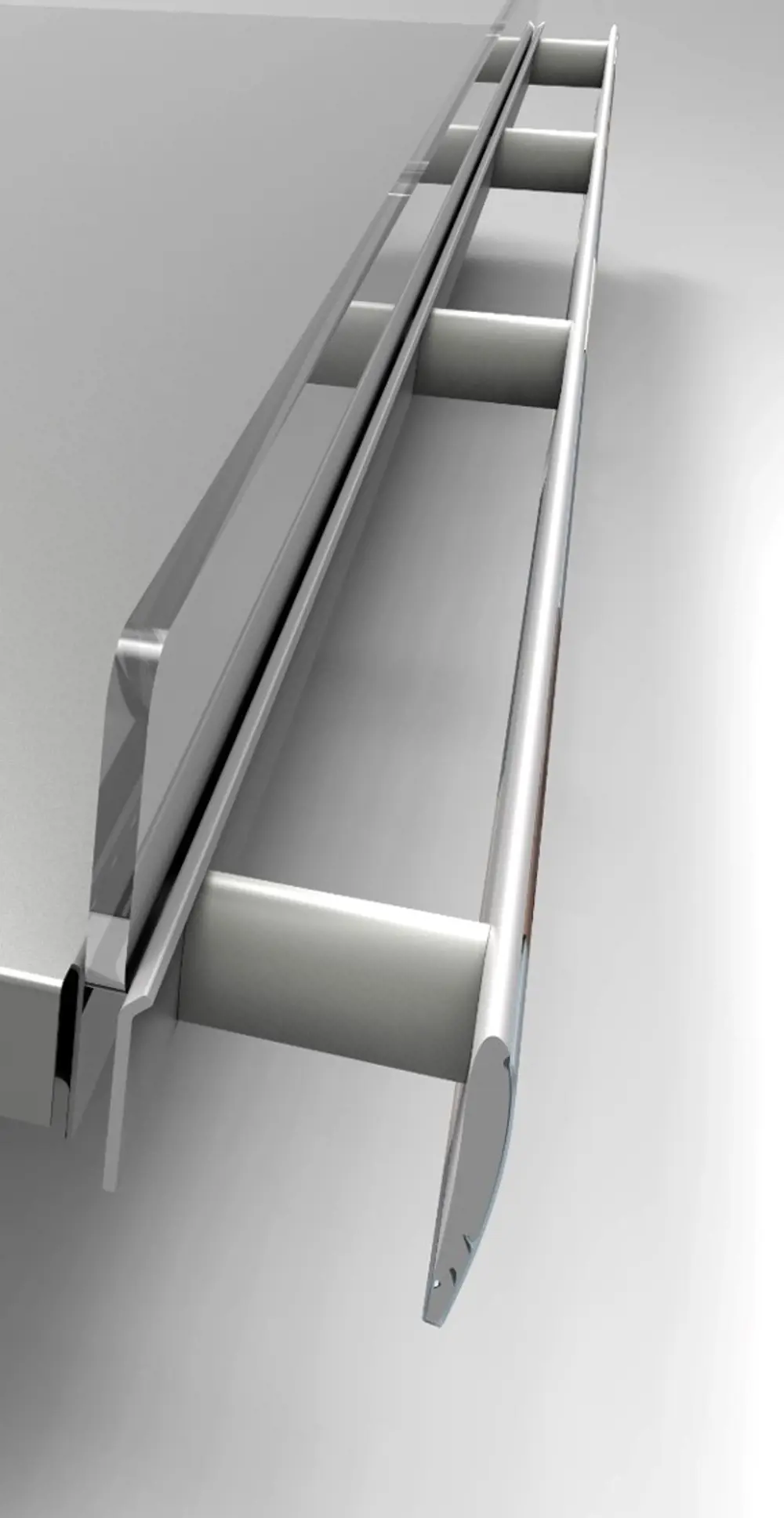
Getting the right fittings were essential to the development of the technology. There isn’t much value in something that looks great if engineers cannot retrofit it to existing fridges, and Aerofoil Energy and Williams’s work on fixtures added to the patent portfolio that protects the technology © Williams Advanced Engineering
Expertise and investment
In 2014, McAndrew set up Aerofoil Energy to bring the idea to market and took to the internet to look for help and investment. He was not sure whether to take it seriously when an email arrived from Williams F1 racing. Christian Bedford, a Director of Williams Technology Ventures, says that McAndrew “nearly put the phone down”, when he rang to discuss the idea. In McAndrew’s defence, he explains that he did not know about Williams’s work outside F1. “You do realise that this is a supermarket fridge operation,” he recalls asking. “Are you sure you have contacted the right person?”
In reality, the project fitted in nicely with Williams’s plans to broaden its activities beyond F1. Set up in 2012, Williams Advanced Engineering exists to take the technology, know-how, intellectual property and what Bedford dubs, “the culture of innovation from four decades in F1” and aims to translate that across several industries.
Bedford says that it was the title of McAndrew’s message that caught Williams’s attention. It said, “the big four need these”. The big four in question were the UK’s biggest supermarket chains.
After the initial disbelief, McAndrew realised that Williams’s expertise could help develop the aerofoil technology. His idea was about modifying airflow in open fridges to create an air curtain, while F1 racing cars also depend heavily on aerodynamics. Williams has a large team of aerodynamics engineers, with two sophisticated wind tunnels and powerful expertise in CFD, not to mention access to serious supercomputer facilities. McAndrew could see that work on the fins on F1 racing cars might be relevant to the control of airflow in fridges.
Williams took McAndrew’s aerofoil and put the shape through further CFD analysis. There then followed a year of work on the shape of the aerofoils, refining and perfecting what McAndrew admits were his “pretty rudimentary” designs, based on aerofoils that he saw in YouTube videos and elsewhere.
CFD analysis led to more laboratory tests at Williams that proved that the aerofoils were extremely effective. “We have what we believe is possibly the most aerodynamically perfect piece of equipment that you can move air around a fridge with,” says McAndrew. “It was worth the partnership just for that.” Bedford adds: “We proved that by using a particular shape of aerofoil we could demonstrate up to 30% energy savings for supermarket fridges.”
We have what we believe is possibly the most aerodynamically perfect piece of equipment that you can move air around a fridge with
Getting the shape right was just the beginning. Aerofoil Energy had to come up with a design that did not get in shoppers’ way or make it difficult for shelf stackers to replenish supplies. There was also the challenge of fitting aerofoils to existing fridges with a minimum of disruption to a busy supermarket.
Williams’s engineering expertise came to the fore when it addressed the challenge of attaching aerofoils to fridges. The engineers turned to additive manufacturing (also known as 3D printing) to make parts of the aerofoil and to try different designs for brackets to attach aerofoils to fridges. “One of the key things we needed to achieve was a low fit-out time,” says Bedford. “Technicians have to go into the supermarket, fit the brackets and then attach the aerofoil.” Williams devised a variety of bracket designs to reduce the time it takes to retrofit fridges in a supermarket. These days, supermarkets specify that new fridges they buy come with aerofoils fitted.
Aerofoil Energy tested its approach on this front when it started adding ‘fins’ to chiller cabinets at Sainsbury’s. It took about three months to adapt half of the supermarket’s cabinets. “It has been really well received,” says McAndrew. Engineers cannot just turn up drilling holes in shelves. Retailers certainly want to save energy, but they do not want anything happening that could disrupt customers. “We spent an awful lot of time perfecting that side of it as well,” McAndrew adds.
Energy saving
All this works because Aerofoil Energy can demonstrate energy savings, although McAndrew is careful not to make exaggerated claims. Carefully controlled tests in standardised environments have achieved savings of as much as 38%. However, as he quickly points out: “we get a huge range of results from stores. These go from around 10% all the way up to about 25%.” McAndrew’s line is that anything over 10% for refrigerator energy savings in a supermarket: “is a very big number”.
McAndrew’s line is that anything over 10% for refrigerator energy savings in a supermarket: “is a very big number”
Sainsbury’s is certainly happy to back this view in its endorsement of the technology. One of the first to adopt the new technology, the supermarket’s annual energy bill runs to hundreds of millions of pounds and refrigeration accounts for about half of that amount. The supermarket believes that aerofoils have cut refrigeration costs by up to 15% – a potential annual saving of several million pounds.

The image on the left shows a fridge fitted with an aerofoil and demonstrates that more of the cool air is retained, compared the image on the right, which shows a fridge with no aerofoil fitted © Williams Advanced Engineering
On the wider front, open fridges add significantly to the UK’s energy consumption. Sainsbury’s alone accounts for about 1% of the UK’s energy bill. Warmer aisles not only cut the bills, there is also a chance that customers will spend more time, and money, in previously chilly aisles.
When deciding on spending decisions, supermarkets will not consider an innovation that takes too long to pay back the investment; they are often not interested in anything that takes more than three years to recover the cost. The aerofoils pay for themselves much more quickly than that, with McAndrew saying that the payback time can be less than a year.
The idea is certainly popular with the UK’s supermarkets. Sainsbury’s adoption of the technology was the breakthrough and opened the door to others. Many of the UK’s big stores have taken the idea on board, including Asda – which announced in September 2018 that it will fit aerofoils to fridges in 187 of its supermarkets – and Boots. Interest is also growing outside the UK with aerofoils appearing in the US, Europe, Australia, South Africa, and the Middle East.
Timeline
🍓 Aerofoil’s journey from idea to supermarket
February 2013 – Paul McAndrew conceives idea of using aerofoils to save energy in commercial open fridges.
November 2013 – formation of Aerofoil Energy.
September 2014 – Williams Advanced Engineering scouts Aerofoil Energy.
April 2015 – collaboration starts with Williams Advanced Engineering.
May 2016 – more than 50 independent laboratory trials by over 20 of the world’s largest refrigeration manufacturers.
January 2017 – first units begin to be installed.
November 2017 – Sainsbury’s announces plans to install Aerofoil across its stores, which it has now completed.
March 2018 – trials in over 1,000 stores.
June 2018 – one of three finalists for Royal Academy of Engineering’s MacRobert Award.
September 2018 – Asda announces installation in an additional 187 supermarkets.
October 2018 – more than 400,000 aerofoils fitted in over 1,500 stores to date.
A growing partnership
Large retailers may not feel comfortable dealing with a startup company, McAndrew admits, so having Williams on board helps. “It is F1 technology we are using,” he adds.
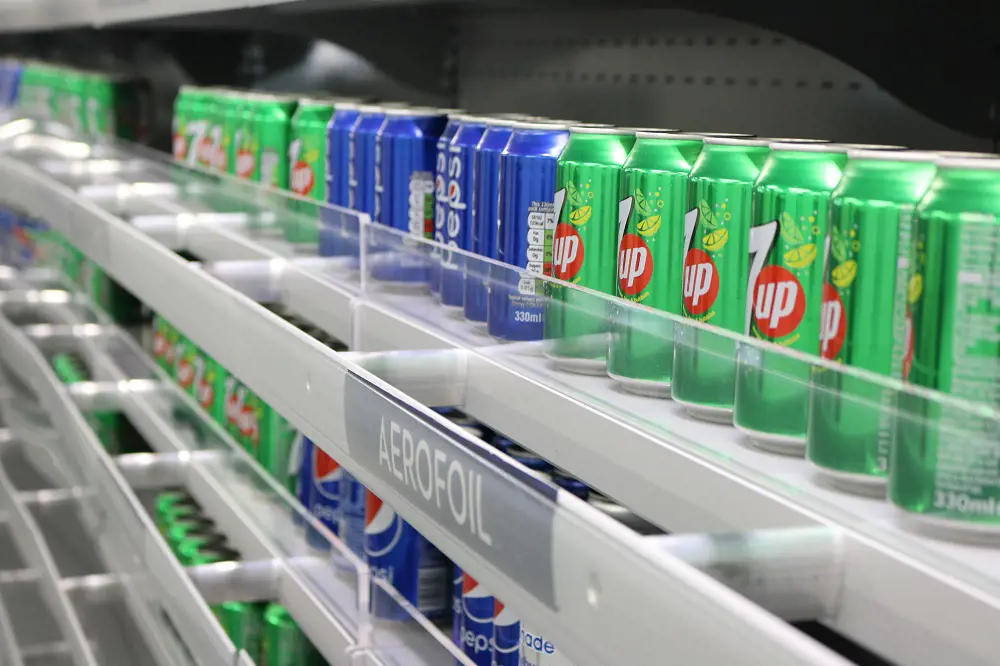
The aerofoil technology can deliver significant energy and carbon savings for supermarkets, as well as other benefits such as improving product temperature, meaning that less chilled food is wasted © Williams Advanced Engineering
As McAndrew describes it, working with Williams “is a great partnership”, working on new products for example. Now a growing business, Aerofoil Energy licenses underlying patents from Williams but holds the patents for its aerofoils. The fledgling business also benefits from regular input from Williams on strategy and how to take the technology that they developed together out to the rest of the world, which is now a high priority for Aerofoil Energy. With luck, shoppers in other countries will soon see the decline of cold aisles too.
***
This article has been adapted from "Warm response to fluid dynamics", which originally appeared in the print edition of Ingenia 77 (December 2018).
Contributors
Michael Kenward OBE
Author
Paul McAndrew is Founder and CEO of Aerofoil Energy. He is a display refrigeration specialist with a wealth of experience in the commercial refrigeration sector. Over the past 15 years Paul has launched seven UK startups in the refrigeration and technology sectors and also co-founded a distributed computing platform.
Christian Bedford is Group General Counsel and Company Secretary at Volex. At the time of writing he was Head of Legal at Williams Advanced Engineering and a Director of Williams Technology Ventures. He worked across the commercial side of the organisation as well as the legal department and focused on helping to drive business growth and direction through technology innovation.
Keep up-to-date with Ingenia for free
SubscribeRelated content
Design & manufacturing
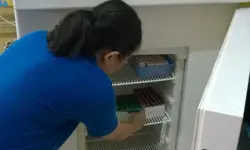
Super cool(er)
Welsh startup Sure Chill has developed a cooler that uses the properties of water to keep its contents cool for around 10 days without electricity. This is ideal for storing items such as vaccines where electricity sources are unreliable.

R&D investment makes good business sense
In just five years, Dr Ralf Speth FREng has presided over a revolution in design and manufacturing that has helped create a new family of engines and has overhauled Jaguar Land Rover (JLR) production facilities.

Steel can arise from the ashes of coal
Thousands of people were laid off in the UK steel industry in 2015 and there are pessimistic future forecasts. Professor Sridhar Seetharaman of the Warwick Manufacturing Group argues that smaller, flexible steel mills implementing new technology would better cope with fluctuating global trends.

Integrating metrology in business and academe
Professor Jane Jiang’s interest in measuring began when she worked on a bus production line in China. She found that the best way to improve quality, consistency and productivity was through metrology, the science of measurement. Today, she runs the UK’s largest metrology research group.
Other content from Ingenia
Quick read

- Environment & sustainability
- Opinion
A young engineer’s perspective on the good, the bad and the ugly of COP27

- Environment & sustainability
- Issue 95
How do we pay for net zero technologies?
Quick read

- Transport
- Mechanical
- How I got here
Electrifying trains and STEMAZING outreach

- Civil & structural
- Environment & sustainability
- Issue 95